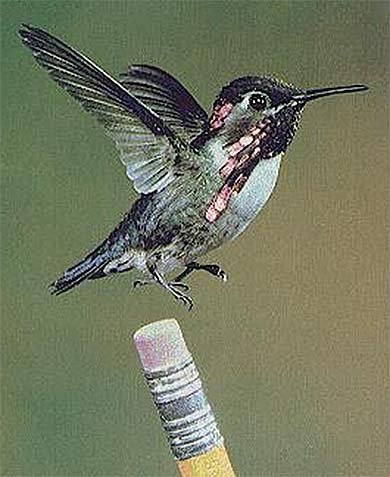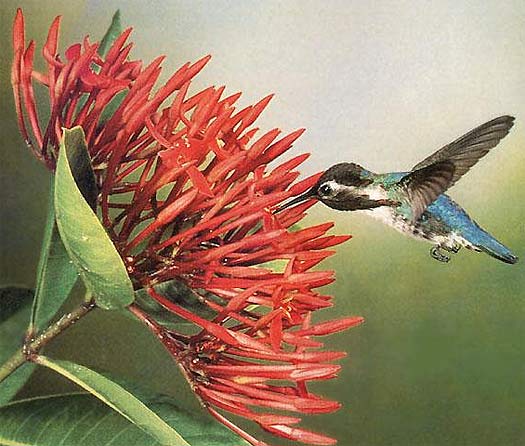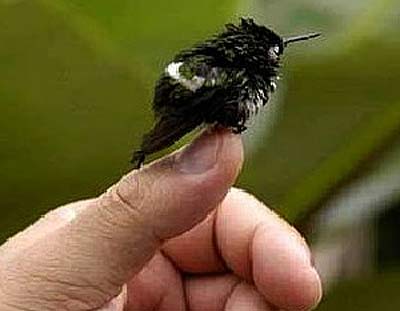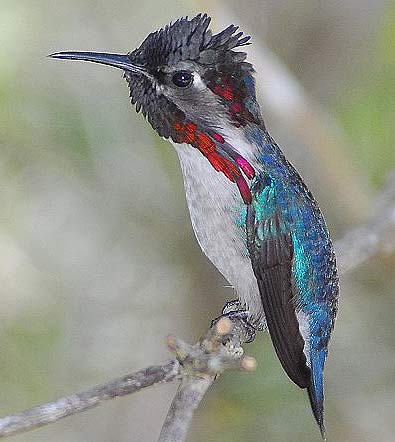on 5th of February
I got a problem on my eyes so that i had to go to hospital to check up. Since i was on junior high school, I got an Allergy on my eyes so if that is relapse, i have to go to hospital to check up again and again untill it's back to normal. that's why i was absent.
on 20th of February
I had a high fever even I couldn't get out of my bed so i decided not to go to school also attend english class. that's why i was absent.
on 26th of February
Because of my absent on 20th of February, i had to come on next swimming lesson that was held on this day, so i couldn't attend english class. that's why i was absent.
on 27th of February
there was a meeting of tour budaya 2015 with all of the committees so i couldn't attend english class. that's why i was absent.
06/03/15
04/03/15
MOVIE REVIEW
The Inception
But what if other people could literally invade our dreams, what if a technology existed that enabled interlopers to create and manipulate sleeping life with the goal of stealing our secret thoughts, or more unsettling still, implanting ideas in the deepest of subconscious states and making us believe they're our own?
Having come up with the idea when he was 16, Nolan wrote the first draft of "Inception" eight years ago and in the interim his great success with "Batman Begins" and "The Dark Knight," not to mention the earlier "Memento," put him in a position to cast Leonardo DiCaprio and six other Oscar-nominated actors and spend a reported $160 million in a most daring way.
For "Inception" is not only about the dream state, it often plays on
screen in a dreamlike way, which means that it has the gift of being
easier to follow than to explain. Specifics of the plot can be difficult
to pin down, especially at first, and guessing moment to moment what
will be happening next, or even if the characters are in a dream or in
reality, is not always possible. But even while literal understanding
can remain tantilizingly out of reach, you always intuitively understand
what is going on and why.
Helping in that understanding, and one of the film's most satisfying aspects, are its roots in old-fashioned genre entertainment, albeit genre amped up to warp speed. Besides its science-fiction theme, "Inception" also has strong film noir ties, easily recognizable elements like the femme fatale, doomed love and the protagonist's fateful decision to take on "one last job."
That would be DiCaprio's Dom Cobb, a thief who specializes in what's called extraction, in taking secrets from the subconscious. Aided by Arthur (a fine Joseph Gordon-Levitt), the trusted associate who is a whiz at the mechanics involved, Cobb is introduced in the middle of a dream involving Saito ( Ken Watanabe), a wealthy Japanese businessman.
That one last job is soon proposed by Saito, who asks Cobb if he is also able to do inception, the planting of ideas, a maneuver many people believe can't be done. Saito promises Cobb, who has a past which prevents him from returning to his children in America, the one thing he can't resist. If he takes on this one last job, if he agrees to practice inception on Robert Fischer ( Cillian Murphy), the heir to a multibillion-dollar energy empire, he will be able to return home.
In true movie fashion, Cobb has to round up a team to do the job. Aside from Arthur, he needs Eames, the forger (Tom Hardy), gifted at impersonating people inside dreams, and Yusuf, the chemist ( Dileep Rao), who makes the compounds that put people under. And with the aid of his father-in-law Miles ( Michael Caine), he meets Ariadne.
Named after the mythological character who helped Theseus find his way out of the Minotaur's labyrinth, Ariadne is a young architect who is needed to create the subconscious landscapes in which the dreams will take place. As played by Ellen Page, adroitly cast for her youth, intelligence and earnestness, Ariadne is the team's last essential element.
In addition to not knowing what they'll find inside Fischer's dream (believe me, there's plenty going on), Cobb and his team have to contend with a wild card: Mal, the untrustworthy femme fatale, a woman with deep and complicated ties to Cobb's past and someone who specializes in finding her way into dreams where she is not wanted.
Helping in that understanding, and one of the film's most satisfying aspects, are its roots in old-fashioned genre entertainment, albeit genre amped up to warp speed. Besides its science-fiction theme, "Inception" also has strong film noir ties, easily recognizable elements like the femme fatale, doomed love and the protagonist's fateful decision to take on "one last job."
That would be DiCaprio's Dom Cobb, a thief who specializes in what's called extraction, in taking secrets from the subconscious. Aided by Arthur (a fine Joseph Gordon-Levitt), the trusted associate who is a whiz at the mechanics involved, Cobb is introduced in the middle of a dream involving Saito ( Ken Watanabe), a wealthy Japanese businessman.
That one last job is soon proposed by Saito, who asks Cobb if he is also able to do inception, the planting of ideas, a maneuver many people believe can't be done. Saito promises Cobb, who has a past which prevents him from returning to his children in America, the one thing he can't resist. If he takes on this one last job, if he agrees to practice inception on Robert Fischer ( Cillian Murphy), the heir to a multibillion-dollar energy empire, he will be able to return home.
In true movie fashion, Cobb has to round up a team to do the job. Aside from Arthur, he needs Eames, the forger (Tom Hardy), gifted at impersonating people inside dreams, and Yusuf, the chemist ( Dileep Rao), who makes the compounds that put people under. And with the aid of his father-in-law Miles ( Michael Caine), he meets Ariadne.
Named after the mythological character who helped Theseus find his way out of the Minotaur's labyrinth, Ariadne is a young architect who is needed to create the subconscious landscapes in which the dreams will take place. As played by Ellen Page, adroitly cast for her youth, intelligence and earnestness, Ariadne is the team's last essential element.
In addition to not knowing what they'll find inside Fischer's dream (believe me, there's plenty going on), Cobb and his team have to contend with a wild card: Mal, the untrustworthy femme fatale, a woman with deep and complicated ties to Cobb's past and someone who specializes in finding her way into dreams where she is not wanted.
The selection of Oscar-winning French actress Marion Cotillard as Mal
typifies the care Nolan has taken to cast these thriller roles for
emotional connection, a move which pays off in the scenes she shares
with DiCaprio. In addition to the impeccably professional Batman
veterans Caine and Murphy, the film is also on the money with the
smaller roles, including Pete Postlethwaite as Fischer's ailing tycoon
father and Tom Berenger as one of his key associates.
The reason all these diverse elements successfully come together is Nolan's meticulous grasp of the details necessary to achieve his bravura ambitions. A filmmaker so committed he does his own second unit direction, Nolan is one of the few people, to quote F. Scott Fitzgerald on film mogul Monroe Stahr in "The Last Tycoon," "able to keep the whole equation of pictures in their heads."
 His goal in doing all of this, Nolan told American Cinematographer, is a
desire to always "be putting the audience into the experience," to
create "what I like to call a 'tumbling forward' quality, where you're
being pulled along into the action."
His goal in doing all of this, Nolan told American Cinematographer, is a
desire to always "be putting the audience into the experience," to
create "what I like to call a 'tumbling forward' quality, where you're
being pulled along into the action."
Speaking of Paris, it's one measure of how wide-ranging Nolan's influences are that he used the classic Edith Piaf song "Non, Je Ne Regrette Rien" as a key plot element. The pleasure of "Inception" is not that Nolan, as the song says, regrets nothing, it's that he has forgotten nothing, expertly blending the best of traditional and modern filmmaking. If you're searching for smart and nervy popular entertainment, this is what it looks like.
The reason all these diverse elements successfully come together is Nolan's meticulous grasp of the details necessary to achieve his bravura ambitions. A filmmaker so committed he does his own second unit direction, Nolan is one of the few people, to quote F. Scott Fitzgerald on film mogul Monroe Stahr in "The Last Tycoon," "able to keep the whole equation of pictures in their heads."
Because he's been so successful, Nolan, like Clint Eastwood, has been
able to return again and again to the same creative team, which includes
exceptional director of photography Wally Pfister, sharp-eyed editor
Lee Smith and composer Hans Zimmer, whose propulsive score helps compel
the action forward.
Incapable of making even standard exposition look ordinary, Nolan is especially strong in creating the stunts, effects and out-of-the-ordinary elements whose believability characterizes this film as they did his previous Batman efforts.
Shooting "Inception" in six countries, preferring to do elaborate stunts in camera whenever possible but expert at utilizing computer-generated effects when necessary, Nolan and his team (including production designer Guy Hendrix Dyas, special effects supervisor Chris Corbould, visual effects supervisor Paul Franklin and stunt coordinator Tom Struthers) have come up with some unforgettable set pieces. As detailed in a thorough cover story in American Cinematographer magazine, the standout imagery includes: a 60-foot-long freight train that barrels down the middle of a city street, shot in the vicinity of 7th and Spring in downtown L.A. with a replica of the train engine placed on the chassis of an 18-wheel tractor-trailer; a 100-foot hotel corridor built so it could rotate through 360 degrees to mimic a zero-gravity experience; and a mind-altering CGI scene that has a Paris street roll up and over itself like it was some kind of a tapestry instead of a steel and concrete boulevard.
Incapable of making even standard exposition look ordinary, Nolan is especially strong in creating the stunts, effects and out-of-the-ordinary elements whose believability characterizes this film as they did his previous Batman efforts.
Shooting "Inception" in six countries, preferring to do elaborate stunts in camera whenever possible but expert at utilizing computer-generated effects when necessary, Nolan and his team (including production designer Guy Hendrix Dyas, special effects supervisor Chris Corbould, visual effects supervisor Paul Franklin and stunt coordinator Tom Struthers) have come up with some unforgettable set pieces. As detailed in a thorough cover story in American Cinematographer magazine, the standout imagery includes: a 60-foot-long freight train that barrels down the middle of a city street, shot in the vicinity of 7th and Spring in downtown L.A. with a replica of the train engine placed on the chassis of an 18-wheel tractor-trailer; a 100-foot hotel corridor built so it could rotate through 360 degrees to mimic a zero-gravity experience; and a mind-altering CGI scene that has a Paris street roll up and over itself like it was some kind of a tapestry instead of a steel and concrete boulevard.
Speaking of Paris, it's one measure of how wide-ranging Nolan's influences are that he used the classic Edith Piaf song "Non, Je Ne Regrette Rien" as a key plot element. The pleasure of "Inception" is not that Nolan, as the song says, regrets nothing, it's that he has forgotten nothing, expertly blending the best of traditional and modern filmmaking. If you're searching for smart and nervy popular entertainment, this is what it looks like.
Bee Hummingbird - Smallest Bird in the World
| Bee hummingbird | |
|---|---|
 |
|
| Conservation status | |
| Scientific classification | |
| Kingdom: | Animalia |
| Phylum: | Chordata |
| Class: | Aves |
| Order: | Trochiliformes |
| Family: | Trochilidae |
| Genus: | Mellisuga |
| Species: | M. helenae |
| Binomial name | |
| Mellisuga helenae | |

The bee hummingbird is the smallest extant bird species on the face of the earth - extant being the opposite of extinct, that is to say, there are no living species of birds in the world smaller than the bee hummingbird. Exactly how small do you have to be to earn that distinction? No larger than 2 and a half inches long at most, with many birds no bigger than 2 inches total. With weight in a range between 0.056 and 0.067 ounces (1.6-1.9 g), these small birds are easily mistaken for insects, and are in fact not much bigger than the honey-making bugs for which they are named. They are also blessed with bright iridescent coloring of red, blue and green.


The IUCN, who monitors species populations world-wide has moved the bee hummingbird from its lowest warning level "least concerned" to the first elevated concern marker: "near threatened". Living mostly in Cuba and some small surrounding islands, these tiny birds beat their wings an astonishing 80 times per second! The speed at which the bee hummingbird flaps its wings is so fast that the motion is imperceptible to the human eye, and in flight the bee hummingbird is barely more than a blur to onlookers. And that rapid, busy, wing-motion is in fact attached to a busy body (much like a busy bee). Fact: the bee hummingbird is a critical part of their local ecosystem - one bee hummingbird may help pollinate up to 1,500 flowers in a typical day of feeding. Their slender, long bill is well-suited for nectar sipping. They feed mostly on nectar but may be enticed to nibble on an insect or spider too.

With tiny bodies comes tiny nests - a bee hummingbird's domicile is made predominantly from lichen, bark and even little scraps of cobweb. Occupying no more than an inch of space, a nesting hummingbird lays eggs the size of a green pea. These tiny nests can be found in the smallest of places, including literally on the ends of clothespins.
Description
The male has the green pileum and fiery red throat, iridescent gorget with elongated lateral plumes, bluish upper-parts, and the rest of the underparts mostly greyish white. The male is smaller than the female. The female is green above, whitish below with white tips to the outer tail feathers. Compared to other small hummingbirds, which often have a slender appearance, the Bee Hummingbird looks rounded and chunky.Female bee hummingbirds are bluish green with a pale gray underside. The tips of their tailfeathers have white spots. Breeding males have a reddish to pink head, chin, and throat. The female lays only two eggs at a time.
As the smallest bird in the world, it is no larger than a big insect and, as its name suggests, is scarcely larger than a bee. Like all hummingbirds, it is a swift, strong flier. It also can hover over one spot like a helicopter. The bee hummingbird beats its wings an estimated 80 times per second — so fast that the wings look like a blur to human eyes.
The brilliant, iridescent colors of the bee hummingbird's feathers make the bird seem like a tiny jewel. The iridescence is not always noticeable, but depends on the angle at which a person looks at the bird. The bird's slender, pointed bill is adapted for probing deep into flowers. The bee hummingbird feeds mainly on nectar, and an occasional insect or spider, by moving its tongue rapidly in and out of its mouth. In the process of feeding, the bird picks up pollen on its bill and head. When it flies from flower to flower, it transfers the pollen. In this way, it plays an important role in plant reproduction. In the space of one day the bee hummingbird may visit 1,500 flowers
Using bits of cobwebs, bark, and lichen, the female bee hummingbird builds a cup-shaped nest that is only about 2.5 cm (1 inch) in diameter. Nests have been built on single clothespins. She lines the nest with soft plant fibers. In this nest she lays her eggs, which are no bigger than peas. She alone incubates the eggs and raises the young.
Langganan:
Postingan (Atom)
